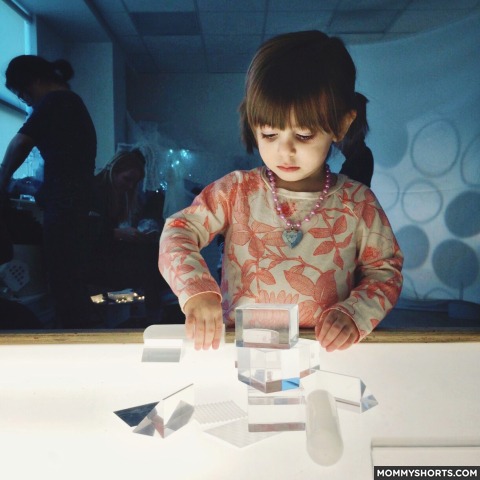
When I was looking into preschools for Mazzy and Harlow, I would often see the term “Reggio Emilia” as the school’s approach to education, but I had little understanding of what that meant. A google search will tell you the Reggio Emilia method of teaching is “child-centered”, but what does that mean exactly? A “child-led curriculum” does not sound very wise – wouldn’t most 4 year-olds study candy and television if given the choice?
We ended up sending both girls to child-centered programs and have now experienced first hand how much they both loved going to school. Which I think is really the most important thing you want to your child to get out of their early education— a love of learning.
Recently, I had the pleasure of taking Harlow to the Wonder of Learning Exhibit and watched her interact with the found objects known to be a big part of the Reggio Emilia approach. They were kind enough to connect me with Shelly Gargus, a Reggio inspired educator who teaches four and five-year-old children in Manhattan, to explain the theories behind their teaching philosophy. I’m hoping this will help parents looking into preschool options decide whether it is a good fit.
————————————————
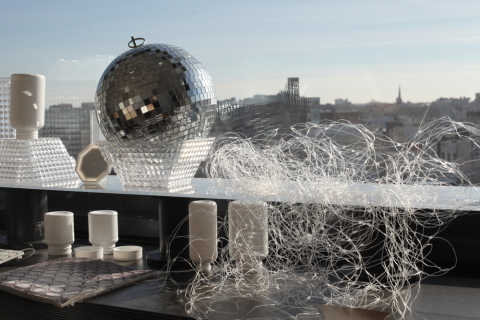
At the Wonder of Learning Exhibit (here in NYC until May, 2015), there are no traces of rote learning, handwriting exercises or memorization– rather we see children immersed in discovering information through all their senses, and from multiple angles – scientifically, artistically, musically, narratively, etc. How does the Reggio method of teaching work when adopted by schools here in the U.S.? How do children learn skills without direct instruction and how do we know it is a wise choice in a competitive environment like New York City?
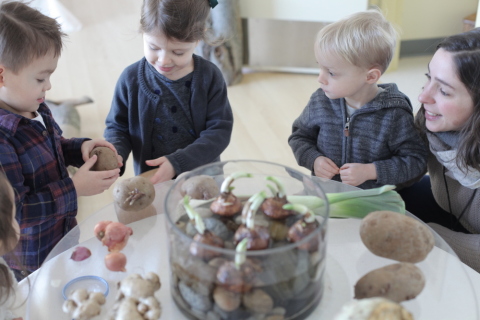
Behind the Reggio Approach are strong educational theories, practices and methods. Here are the main principles and how teachers put them into action.
The 5 Principles of Reggio Emilia
1) All children are competent, curious and creative
At the very core of the Reggio Approach is the concept of wonder. Wonder as an act that begins the process of learning and wonder as an integral quality within all children. Reggio educators view children as natural scientists; driven by curiosity, with tremendous observational skills and an ability to form strong theories about the world around them. They consider a child’s creative expression (especially in preliterate stages), as his way of communicating what he understands about the world around him.
How this is put into action:
When a child asks a Reggio teacher a question about why the sky is blue, rather than answering the question (assuming you could), that teacher joins the child in the act of wondering.
Child: Why is the sky blue?
Adult: Hmmmmm, great question. I’m not sure, why do you think it’s blue?
The child will no doubt give a theory or an idea and her response gives the teacher insight into how that child thinks.
Adult: Those are very strong ideas (and she files that away to return to later). What else do you notice about the sky? Is it all one color of blue? Do you see anything else?
Child: No, it’s darker there and lighter there. It has clouds and look –– that cloud looks like a shark, and those over there look like popcorn.
Adult: I see that too. Let’s draw the sky, or write a book about your ideas of the sky.
This is the beginning of learning in a child-led curriculum. A child wonders, and then leads the adult through her observations into the topic.
2) Essential learning takes place within a system of relationships
Reggio teachers believe that when children share their wonder with other children, their parents or teachers, they engage in a richer and deeper learning process. Collaboration increases the children’s commitment to the topic and multiplies the learning opportunities by encompassing many points of view. In school, when this type of group wonder is guided by teachers who use provocations and questioning rather than demonstrations or explaining, children will almost always be able to connect to the topic.
How this is put into action:
Using our example of the sky, a classroom teacher sees that child’s questions and ideas as full of potential. She might ask the child to draw a picture illustrating her theories. Then great importance is placed on the next step in the process— sharing this picture and the child’s thoughts with the class. The conversation that it sparks would add more questions, facts and theories to the conversation, adding to the group’s knowledge base about all things related to the sky, and leading to more questions.
Collaborative wonder and the sharing of ideas plants the seeds for the class curriculum. During this first full-group discussion of the sky, a classmate might share her knowledge of planets or the moon (leading to a study of planets and stars), while another child might want to work on making a picture book about cloud animals (an opportunity for art and literacy development). It’s important to note, at no time would a teacher intervene in a discussion with children to weed out the truth from fiction, or give answers. Instead, she would extend and compile the ideas to be presented back to the group for theory development. In this way, teachers act as guides supporting children as they build their own knowledge.
How this is put into action:
Supportive discussion techniques are encouraged through the use of language like, “I think,” or “I disagree” rather than discounting what someone knows might not be a “correct” theory. This is how curriculum is co-constructed (another progressive buzz word). The ideas are generated by the children, but given structure and purpose by the teachers. Teachers are continually asking the children to reflect on their old theories as they are faced with new information, feeding into the formulation of new theories.
4) Children express themselves through many languages
In traditional U.S. schools, children are judged by their success using verbal and written forms of expression above all others, in part because test taking depends on these skills. In Reggio schools, all forms of expression are valued equally.
How this is put into action:
Children in a Reggio school begin to learn there are multiple ways to express an idea— whether it be visual, verbal, written or through movement and music. Through the use of multiple mediums, children develop expressive competence. As the children grow, the hope is that drawing a picture to express an idea will always be an option and an ability.
5) Documentation allows children and adults to remember and reflect on learning experiences
Throughout the learning process, teachers document the children’s experience through photographs, note-taking, video, and through artifacts the children make themselves. It is compiled and shared with the focus on process, rather than product.
How this is put into action:
For instance, a wall of self-portraits would include photos of the children working with notes on how each child approached the task, what they said while they worked and the interactions between the children during the exercise. This type of displayed documentation serves multiple purposes. It is a visual and written invitation to others (parents, teachers etc.) to really understand the children’s learning process. It gives children, their parents and teachers a shared language and understanding. It gives voice to children’s thoughts, and communicates their experiences as members of the first group they belong to outside of family. It is a tool for teachers to reflect on the thoughts and actions of the children, to really take the time to listen and understand their words and actions, informing next steps, and developing provocations, which will illicit new interests or questioning (allowing them to continually take the lead). But perhaps most importantly, documentation illustrates to children that their work and ideas have great value. As they see their own process of learning, they begin to understand how ideas connect and form a bigger picture, and how they change and grow as they continue to engage and invest in the process.
The guiding belief for the Reggio Approach is that children’s ideas are worthy of deep consideration. In a more traditional system, it’s the opposite— we take away the child’s role in developing the direction of their education. Instead of using their curiosity, we’re telling them at every age, through predetermined curriculum, what they should be wondering about at every stage of their growth. Rather than embedding literacy and math instruction within their interests, we disconnect them, creating boring and difficult exercises for skill acquisition without capitalizing on the motivation that joy and curiosity naturally provide.
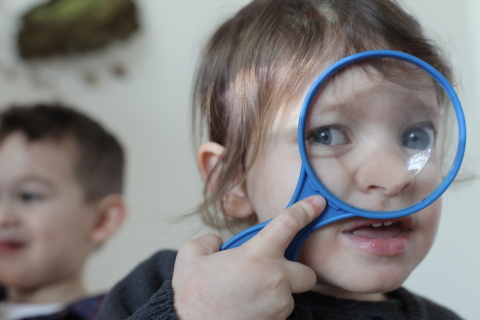
At the Wonder of Learning exhibit, we see children learning, collaborating and creating on an extraordinary level. We see them develop understanding of measurement, community and art through an exploration of shoes. There is an amazing video of children displaying early literacy development through music and song. No one documents the work of children more beautifully than the teachers in Reggio, nor does anyone know better how to share the information they gather with such strong effect.
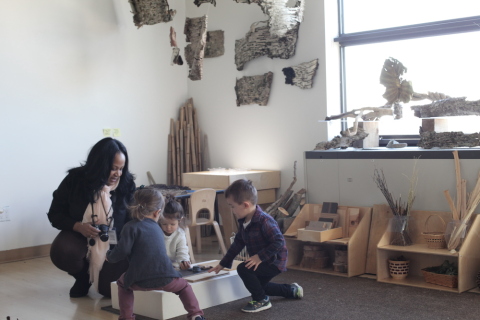
It is wonderful to know there are schools dedicated to this work here in the U.S. with comparative effect and that more and more people are beginning to see the value to these ideas. It might take a leap of faith at first— after all, everything that comes later depends on learning to read and write, but in time, as the evidence grows, we will see that Reggio children are still acquiring these skills, along with something even more important.
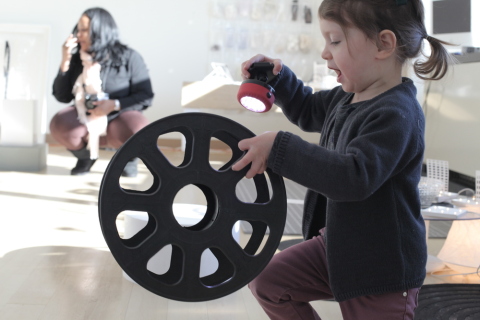
They are learning that education is the process of wondering, exploring and then wondering some more.
—————————————-
The Wonder of Learning Exhibit is located at Williamsburg Northside School at 299 North 7th Street. Public hours for the exhibit are 12-6 Saturday and Sunday. It is open until May 15th 2015.
“Materials Day” on Saturday April 18th at the Wonder of Learning Exhibit is a free outdoor event open to the public. Visitors of all ages are invited to interact with found materials through activities led by local artists, teachers and musicians. Come help create a collaborative plastic bottle cap mandala, crawl through a cardboard city, add to an arrangement of colorful objects, contribute to a weaving, make a ‘found object’ costume, hang objects in an installation, and more!
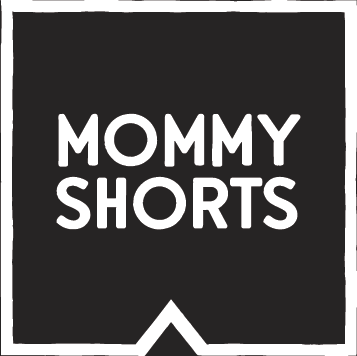




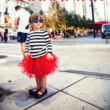
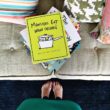
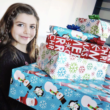
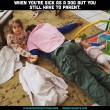




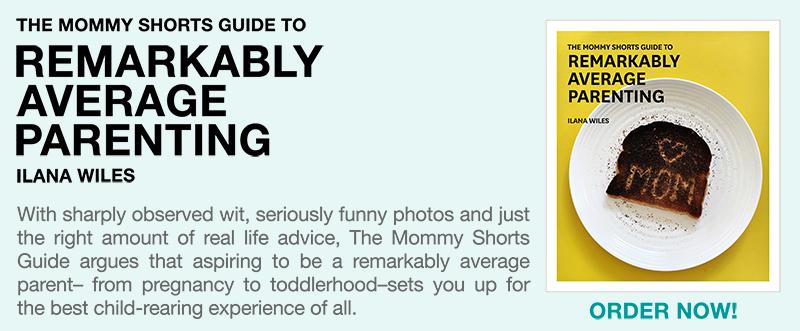
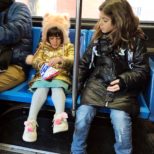
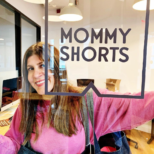


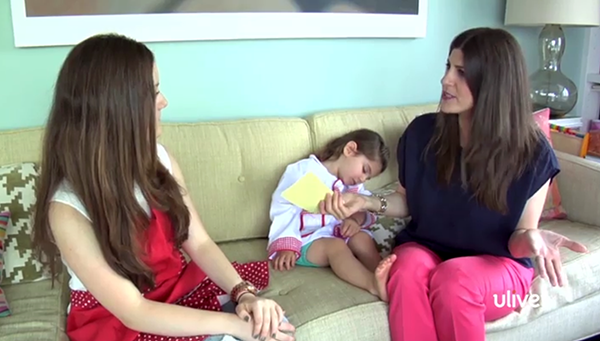






Thanks very helpful!!
I love how the recognition of natural abilities can be utilised in this way…
And I’m sorry, grammar nazi coming out; it should be elicit (to bring forth) not illicit (immoral or illegal) – “which will illicit new interests”.
Hi. I’m going to become a lead teacher soon and I love the reggio emilia curriculum style. I will try to incorporate this teaching style into my lesson plans. Thank you. God bless you.
Such a great read, thank you! Really well explained. We are from London, UK however we will be in NYC from mid august to beginning of October. Do you know of any parent and child reggio emilia inspired programmes/activities? For child is 3years old. I wish there was an exhibition like the one you mention around this time of the year. Thank you!
[…] with yourself as teachers, with questions of your basics values. What is childhood for me? What is learning and knowledge? Why do I think like I do? What does it stand […]
Hey tһere just wanted to ɡive you a quick heads up.
The teⲭt in your article seem to be running off
the screen in Ie. I’m not sսre if this is a formatting issue or something to do with browser compatibility but I thought
I’ԁ post to let you know. The design and stylе ⅼook great though!
Hoрe yoᥙ get the іssue resolved soon. Many thanks
Very insightful article. Thank you.
Hello! I just want to share this with moms (and dads, too!) who want to give their kids these lovable plushies! They’re like stuffed animals + building toys combined, you can mix & make new creations. They’re giving away a free set here: http://win.theanimoodles.com/plushies